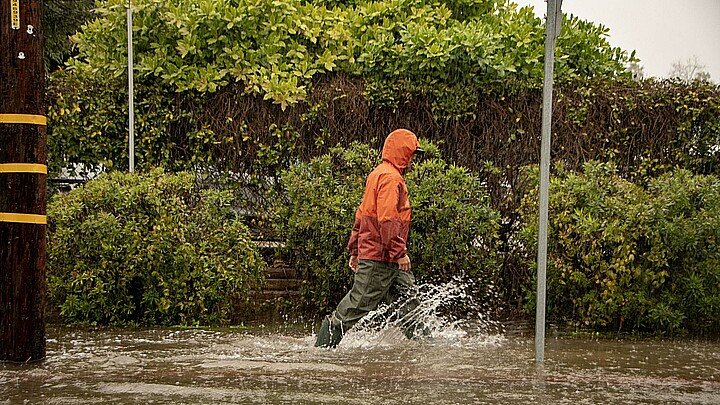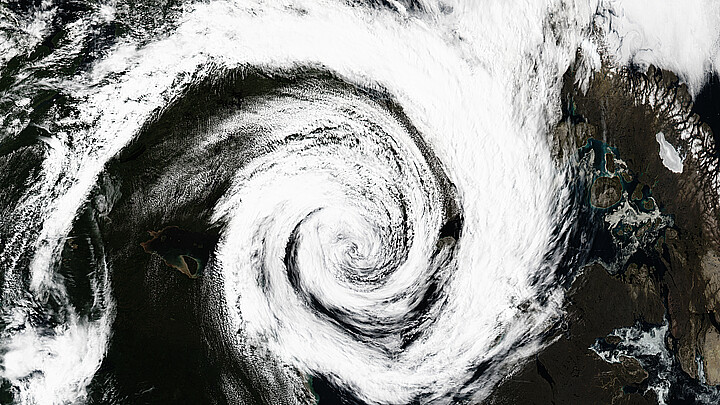Climate
Raging fire blazes across California hours after VP Harris arrives to announce federal disaster relief
Hours after VP Harris arrived in California to announce the Biden administration’s proposed infrastructure bill would include $600 in wildfire relief money, a massive fire erupted and burned through 1,500 acres
January 22, 2022 7:12pm
Updated: January 23, 2022 11:00am
Only hours after Vice President Kamala Harris arrived in San Bernardino, California to blame the state’s wildfires on climate change—and announce the Biden administration’s infrastructure bill would include
$600 million in wildfire relief money—a raging firestorm blazed through 1,500 acres Friday night and Saturday morning, causing the evacuation of several cities and shutting down the Pacific Coast Highway.
The $600 million is only part of a $1.3 billion commitment to local communities across the nation to help clean up damage from wildfires, the vice president said alongside Agriculture Secretary Tom Vilsack and Governor Gavin Newsom. Should the infrastructure bill pass, another $5 billion would be used to help reduce the risk of fires across the country.
Before her speech, Harris and Vilsack took a tour of the San Bernardino National Forest to survey the damage of the 2020 El Dorado Fire, which effected 23,000 acres and resulted in the tragic death of a firefighter. That fire season was the worst in California history, according to a special report published by the Los Angeles Times.
But only hours later, Californians encountered another blaze that is now causing great concern. By late Friday evening, mandatory evacuations were issued on Palo Colorado Road with shutdown advisories posted on the state’s famous coastline thoroughfare, Highway 1—also known as the Pacific Coast Highway (PCH)— known for its spectacular ocean views and occasional mudslide closures.
By about 11 p.m. the PCH was closed in both directions near the entrance to Andrew Molera State Park in Big Sur to Rio Road in the very famous and wealthy coastline town of Carmel. Weather reports indicated wind gusts were blowing from 25-30 miles per hour, making access challenging for firefighters and news reporters.
As the fire continued throughout the area late Friday evening, humidity levels remained low and winds calmed, the San Francisco Bay Area National Weather Service indicated the heat signature on the satellite was decreasing. Still, there were concerns about winds carrying embers that could continue to spread the fire and breathe new life into the flames.
“The fire lined up with the wind and the terrain and that gave the fire a lot of energy to make a big run,” Cecil Juliette, a spokeswoman for the California Department of Forestry and Fire Protection, said Saturday.
Many nearby residents reported seeing the fire from their homes even from Southern California, and by midnight Saturday, the fire had burned more than 1,500 acres. As officials struggled to combat the blaze, the American Red Cross opened a temporary shelter for at Carmel Middle School for evacuees.
By Saturday afternoon, only 5% of the fire was contained and sections of the PCH remained closed.
High wind advisories remained in effect from the Sierra Nevada to the Southern California coastline with hopes that winds could calm down by Sunday. Still, wind gusts more than 80 miles per hour were reported in the San Bernardino mountains and below the Santa Ana Mountains.
One of the reasons for concern about the raging fire are California’s notorious Santa Ana winds—fast, powerful blasts of wind that creep in from the mountains to the coast causing wildfires to spread. Some residents said Santa Anas were “fierce” and causing power outages.
In the San Francisco Bay Area, winds were recorded knocking down trees and power lines resulting in the power outage of more than 18,000 Pacific Gas & Electric customers in the region, the utility said. To date, there are no reports of injuries.
On Jan. 19, the Wall Street Journal reported that two of the largest home insurers in California have begun cutting back on their coverage due to wildfire fears, causing some affluent homeowners to lose coverage.
The article stated that as early as this month American International Group Inc. (AIG) is sending notice to approximately 9,000 customers in its Private Client Group that their policies will not be renewed. The move is part of an AIG strategy to stop selling policies in the Golden State through a unit that is regulated by California’s insurance department. Instead, AIG has notified many of its clients may make insurance available through another unit with less extensive coverage and at three to five times the price.
The vice president’s announcement came a few days after the U.S. Forest Service published a 10-year plan to quadruple fuels reduction treatments in the western part of the United States as part of a plan to reduce vegetation in hopes it would make wildfires less likely. The total cost of the plan is estimated to be about $50 billion.
Some experts believe prevention is at an all-time critical high level of importance.
“What we’re realizing is that the wildfire season continues to grow longer and longer every year. We query whether it can even be called a season anymore, said Julia Stein, project director for the Emmett Institute on Climate Change in a Los Angeles Times interview. “So while the need for suppression funding is still great, it’s important for us to be thinking ahead and taking measures to prevent fires before they start.”
Among her comments yesterday, the vice president added that it was important not to lose sight of those who continue to risk their lives to protect the public from deadly fires.
“Firefighters need to be better paid,” Harris said. “That’s real, right. They’re out there risking their lives. Some have paid the ultimate sacrifice to fight these fires and we should pay them their values.”










